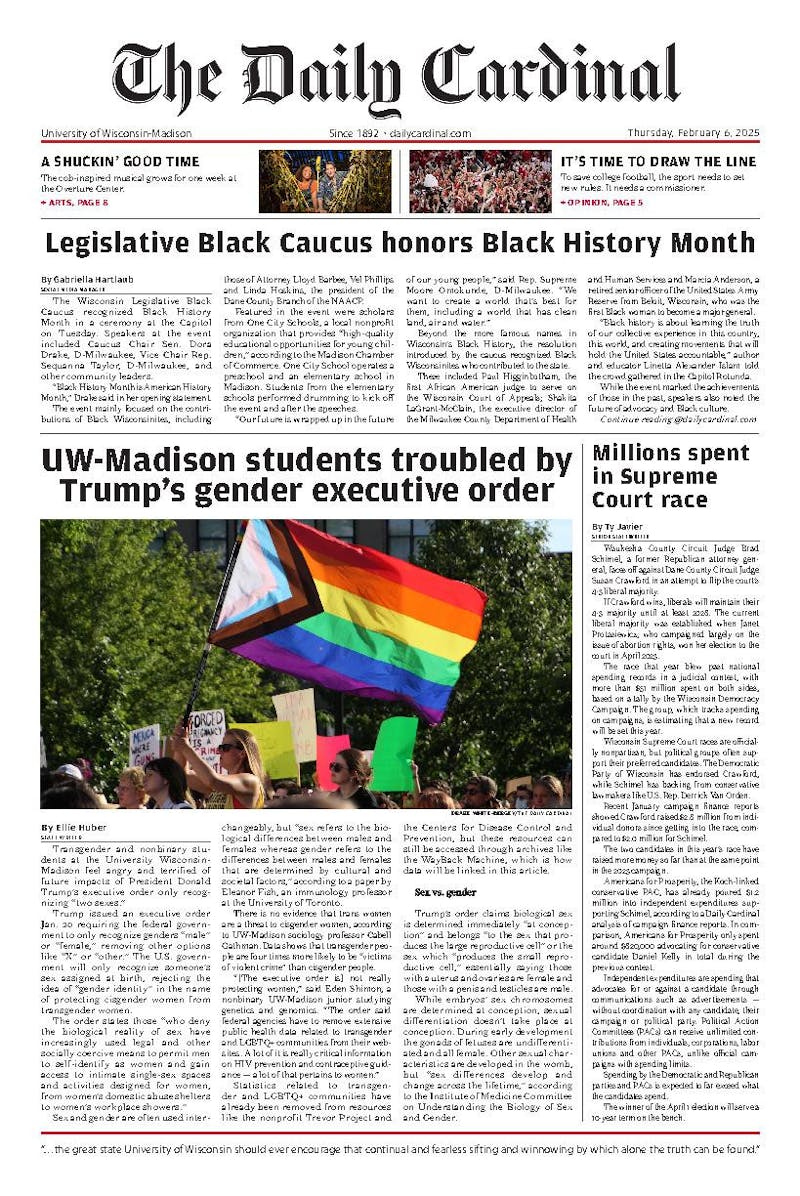In the Capitol building is a small room in which large decisions are made. In the Wisconsin Supreme Court's chamber, seven justices sit in a long row. After April, a new justice will sit among them.
The nonpartisan election is between judges Edward Brunner, Paul Higginbotham and Pat Roggensack.
All three said they share the belief that it is important for everyone, including college students, to participate in this election. Martin Sweet, a UW-Madison political science lecturer, agreed.
\Issues that go to the state Supreme Courts are more likely to affect a student's life than those decisions that come out of the federal Supreme Court,"" Sweet said.
Brunner said the Court could make decisions on issues like privacy and abortion. Other issues could include rulings on tuition, fees and disciplinary problems, according to Higginbotham.
Roggensack said even though most people do not think they will ever go to court, ""appellate courts affect us all with their decisions.""
Each judge would bring a different background and approach to his or her decision making, yet all three said they share a commitment to the system.
Brunner, a circuit court judge in Barron County, has worked on a variety of projects, including a court interpreter program. He said he chose to run to restore public confidence after the recent Wisconsin political scandals.
""I wanted to try to do it in a way that reflected the importance of that branch,"" Brunner said.
Higginbotham also has a wide range of experiences. Besides being a circuit court judge in Dane County, he was also the first municipal judge in Madison and the first Minority Affairs Coordinator for Dane County. Higginbotham said he wants to help people who feel that the court is not responsive to them.
""I think the most important issue is having someone on the court who has the experience that helps the court be more accessible to people,"" Higginbotham said.
He also cited a need for a variety of voices on the court, which is the main reason Roggensack is running.
She said she would be the first Supreme Court Justice who had also served on the Wisconsin Court of Appeals. Her goal is to make the courts an appellate team so both are more cost and time effective.
The Court's decisions could be felt on several levels, according to Sweet, who said the state Supreme Courts are unique because they have the last word on the state constitution and are an intermediate court for federal issues.
When deciding which judge to elect, Sweet said voters should look at what others said about them.
""Traditionally, the best indicator of a justice's competency is the endorsements he or she receives,"" Sweet said.





